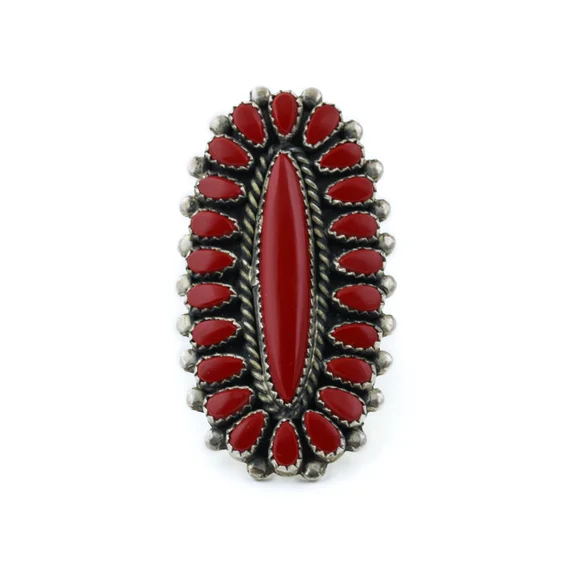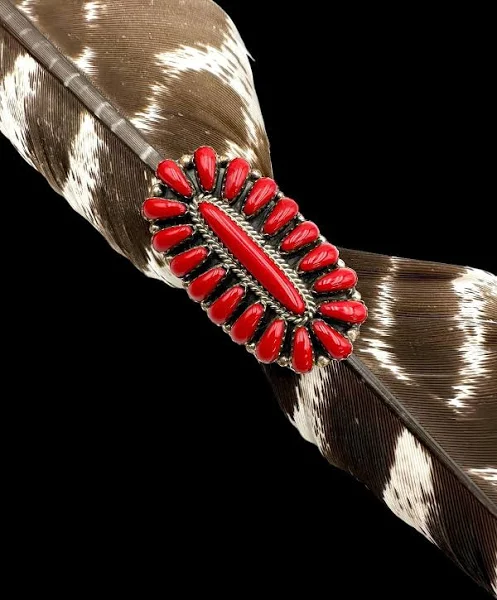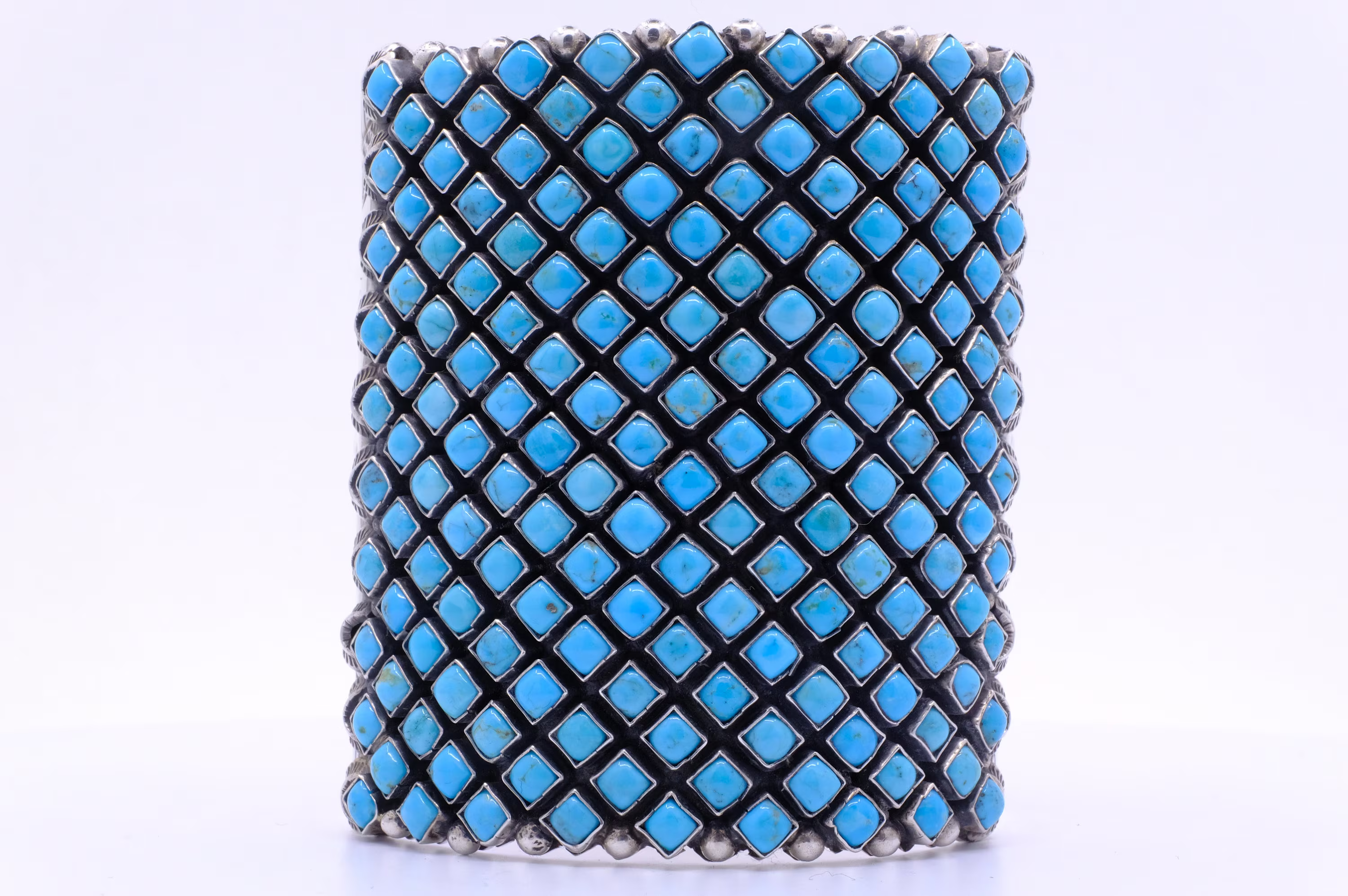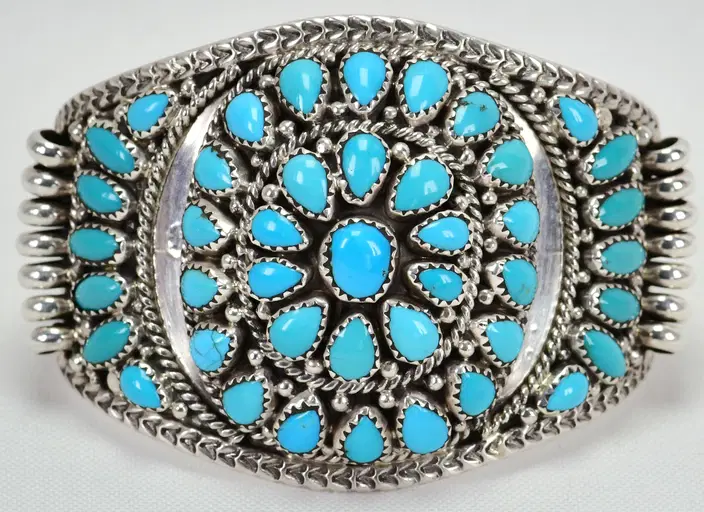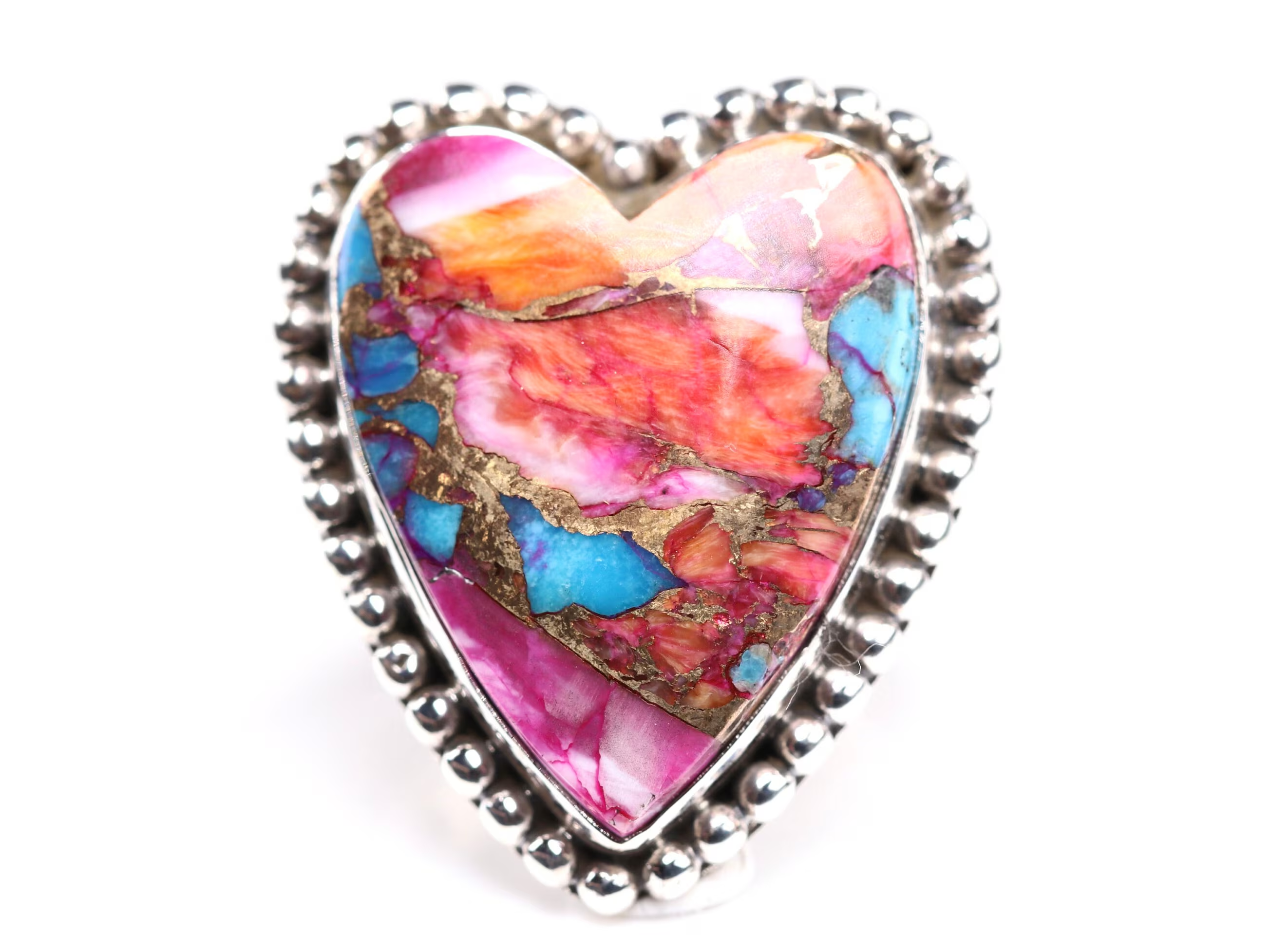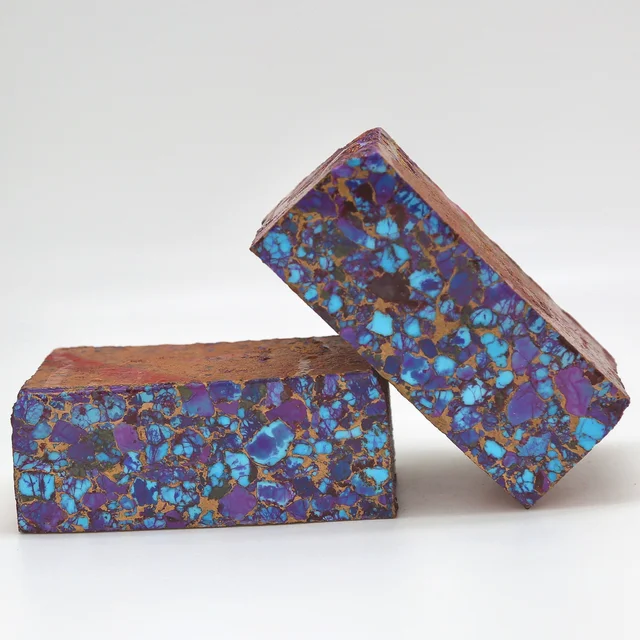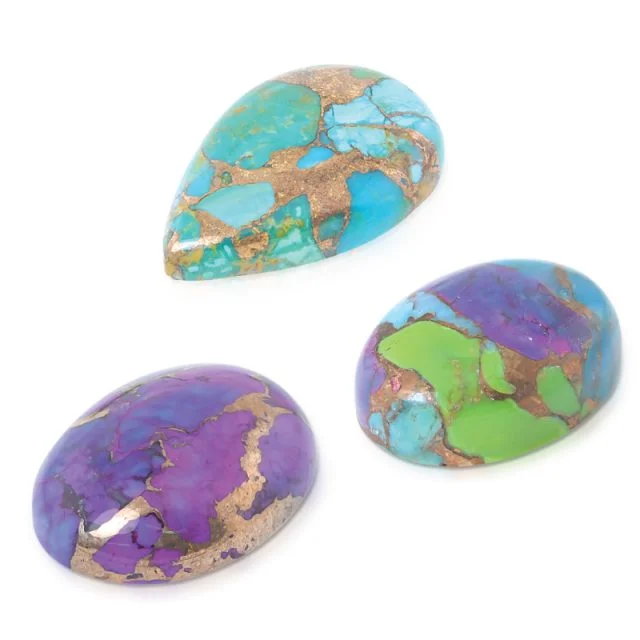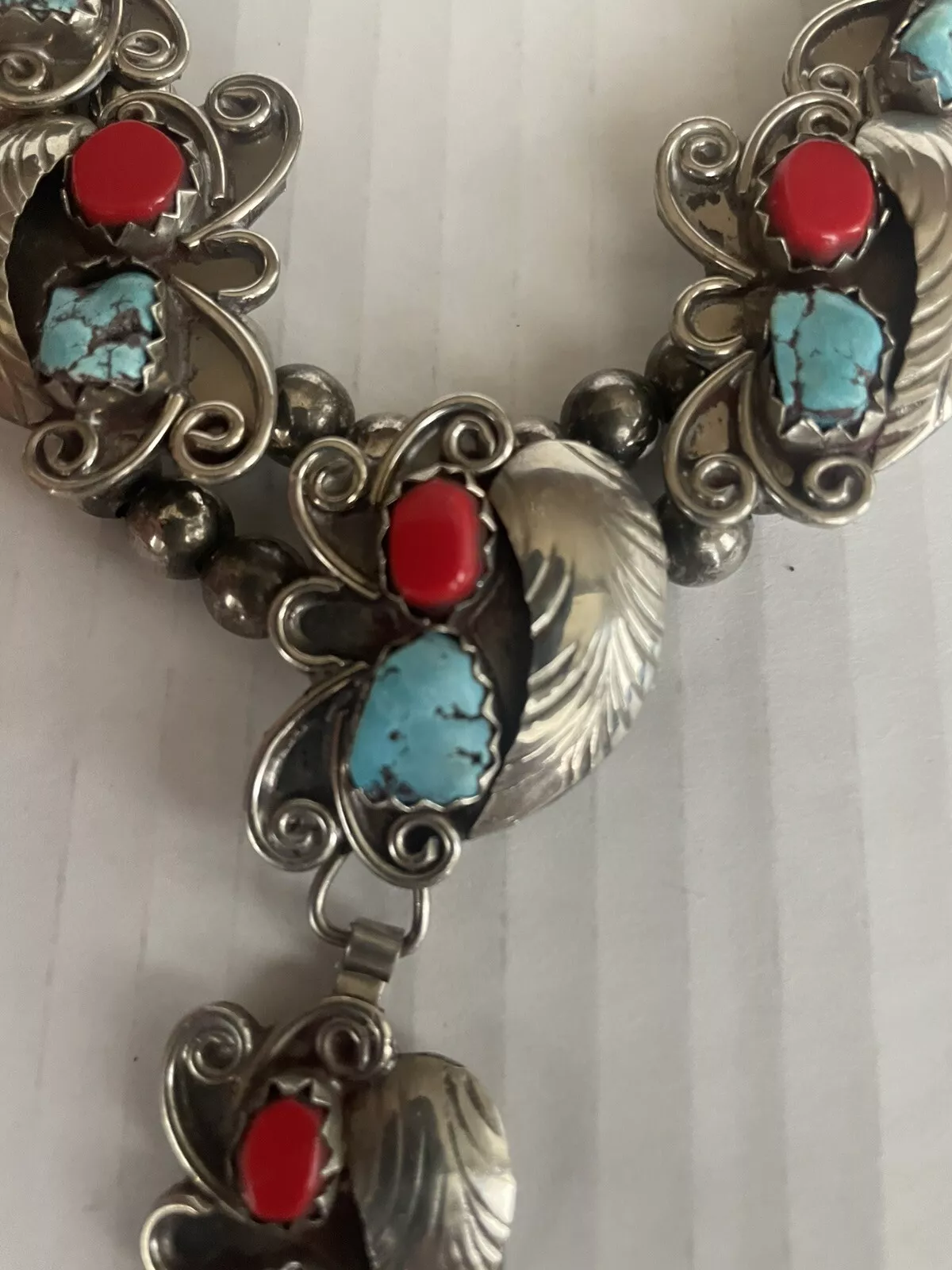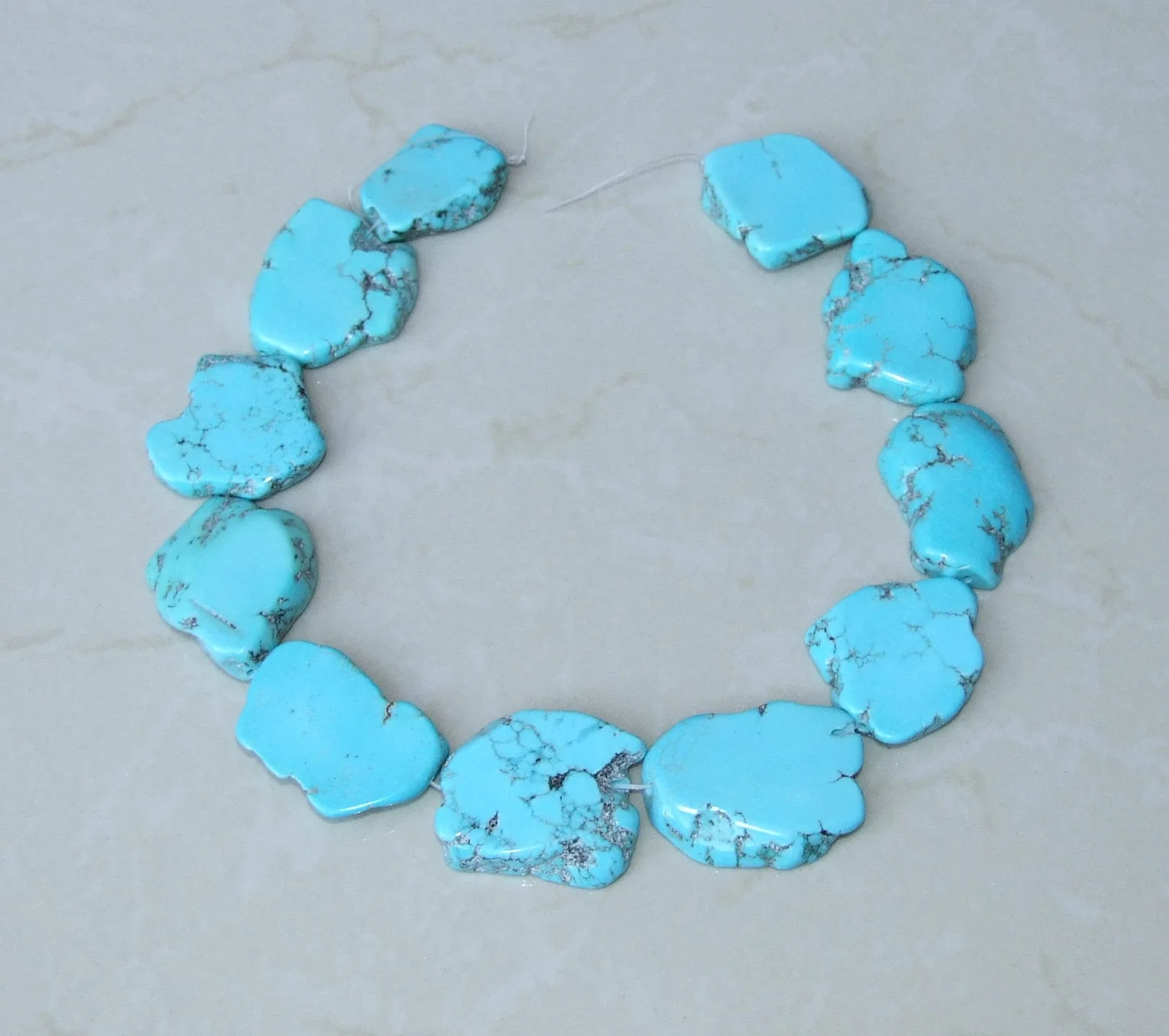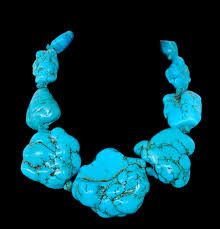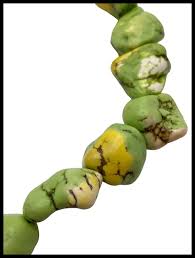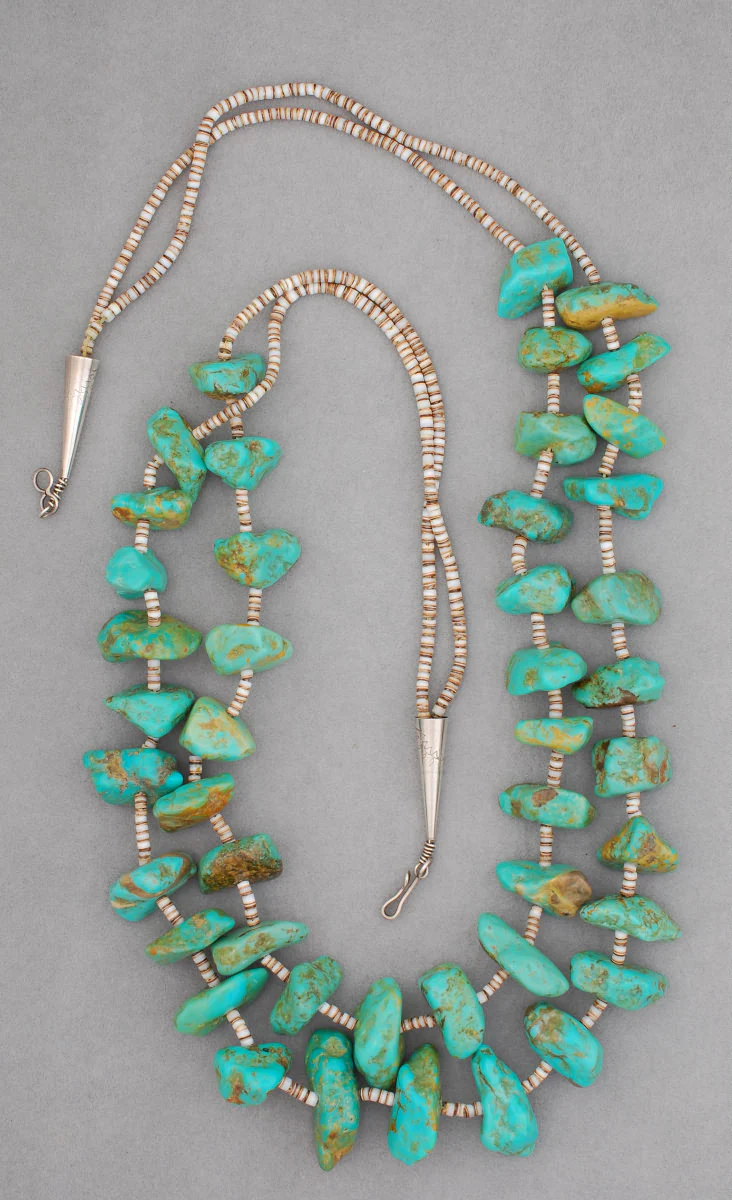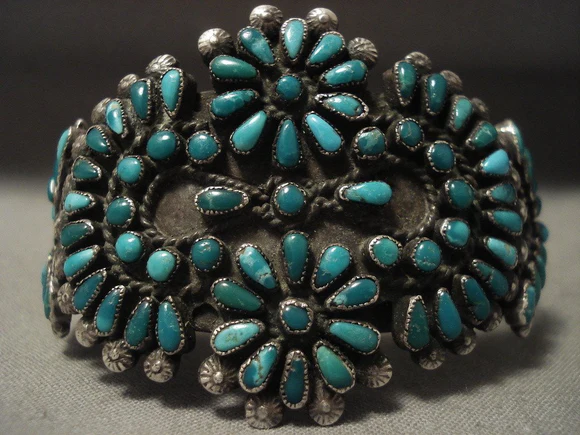How To Identify Real Turquoise
- jessicaanngoodman

- Aug 12
- 7 min read

I will start this blog off with a bit of red tape - learning how to tell the difference really doesn't happen overnight. Please give yourself time, grace, and know there may be mistakes along the way. This can be a huge learning curve - even for more experienced buyers! While researching for this blog I even found an article with a step by step guide on how to dye Howlite to look like Turquoise! With so much access to information and materials these days - fake Turquoise has really seeped onto the market and it can be very confusing. Here are some tips and photos to help strengthen your eye:
#1) Handle Everything!
Handle the real, the fake, and everything in between. I understand not everyone has access to Native American jewelry but if you have a local lapidary club, bead supply store, jewelry store, antique or thrift store , etc. - these are great places to explore real and faux Turquoise. If you are unsure of what you are looking at, don't be afraid to ask questions to just gain experience. Large chain stores like Michaels, Hobby Lobby or Joann Fabrics sell dyed and reconstituted stones for craft projects. They are very inexpensive so it can be a handy learning tool to purchase them and carry them around to compare with stones while out shopping. If you do have access to reputable stores that sell Native American jewelry, go in to ask and look, ask about different mines and stones. The more you can train your eyes - the better!
#2) Research and Resources
Learning about how Turquoise forms, the process of mining, etc. is very helpful as well with discerning if the stone is real or not. I have my resource section and here is a great educational video as well.
#3) Know Your Source/Pricing
In a perfect world, Turquoise and faux materials are sold correctly, but we know this doesn't happen. Technically, real Turquoise will have a large price difference compared to faux. It's always ideal to know your seller - ask them questions, where are they sourcing the jewelry (if it's new and contemporary they should hopefully have information for you), always ask for more photos when purchasing online. If you love having provenance and want to know exactly what mine and where your stone came from - purchase from reputable Lapidary artists. If you need a recommendation, please reach out!
#4) Train Your Eyes
Take some time to either look online or in person at different synthetic materials (block, compressed, dyed howlite, etc) and real Turquoise (stabilized and natural). One common arena where block is used is in petit point jewelry for example - train your eyes to see the variations in real stone color, texture, age will make a difference, artists, etc. Or try recognizing dyed Magnesite nugget necklaces vs real Turquoise nugget necklaces.
Photo Examples & Explanations
Can you spot the real Coral ring? Answer at the end of the blog....
What is Block Material?
Block "turquoise", also known as synthetic or imitation turquoise, is a material that is made to resemble natural turquoise but contains no actual turquoise stone. It is typically a mixture of plastic resin, chemicals, and dyes, often formed into loaf-sized blocks that can be cut and shaped. It is sold in literal blocks (hence the name) before it's cut to be set into jewelry. It should not be called Turquoise as it contains NO Turquoise!! Although artists do use this material and it can be found in authentic Indigenous jewelry, it's considered less valuable, and not as collectible.

Block can have zero matrix or faux enhanced matrix as well. Block is very flat compared to natural stones, it's tonal, the matrix doesn't look real. There is no depth to it like real Turquoise has. Please review one of the many block "Turquoise" color charts below.

Examples of Block in Jewelry:
This can be confusing as block is used in authentic Indigenous jewelry and imports - buy carefully! Check for hallmarks and research the artist first. For example, the first three examples are by deceased Navajo artist Juliana Williams who used block and authentic Turquoise. Compared to the last row of fetish necklaces which are imported and being sold by "reputable" sellers.
This is why it's important to know your artist and seller as often block is sold as Sleeping Beauty. Below are two cuffs by Alice Lister and a concho by Andy Cadman using Sleeping Beauty. Both are higher end artists who use authentic stones.
What is Compressed Material?
Compressed turquoise is created by taking small pieces or chips of natural turquoise and compressing them under high pressure, often combined with a stabilizing agent, to form a larger, more workable stone. This process allows for the creation of turquoise pieces from material that would otherwise be unusable due to size or softness. This material can be color-enhanced as well (e.g. blue, teal, purple, green, red, and other colors). Some of the marketing names for this material is Mojave, Dahlia, Cotton Candy, etc. Native American artists do work with this material but you often find it in imports as well due to it's low cost and that it's been made in mass quantities. Below are examples of compressed material in 'block' form before being cut, as cabochons, and set in jewelry.
What is Dyed Magnesite & Howlite?
Dyed magnesite is a natural mineral, magnesium carbonate, that has been treated with dye to change its color, often to resemble more expensive gemstones like turquoise. It's a popular and affordable material for jewelry making, especially when a turquoise look is desired.
Dyed howlite is a porous, white mineral called howlite that has been artificially colored to resemble other, more expensive gemstones like turquoise or coral. Howlite's porous nature allows it to readily absorb dyes, making it a popular choice for creating imitations of other gemstones.

One key aspect in telling the difference is the color - the dyed materials are very TONAL. True Turquoise is rarely one overall tone, so look for nuances in colors, different tones and depth. Oftentimes the dyed materials will have spots that are fading back to white especially on older pieces. When heat is applied to Magnesite during a treatment or process it can cause a "crackle/lighting" like matrix to appear (see below).



Keep in mind the components of the item as well - are the clasps/silver work imported? Could they have been purchased at a craft store? Is the piece base metal? Unless you are purchasing the piece directly from an artist - I would use caution and ask questions before making a decision.


All Examples of Dyed Magensite
Examples of Real Turquoise Nugget/Disc Necklaces
What is Stabilized Turquoise?
Soft, low grade, turquoise that has undergone a stabilization process to enhance its hardness and color. During this process, the stone is put under pressure, causing it to absorb a clear epoxy or plastic filler. This results in a harder stone that is suitable for use in jewelry. The stabilization process was first invented in the 1950s in Arizona. Prior to this invention, all turquoise used in Native American jewelry was natural turquoise that was hard enough to be cut for jewelry.
Turquoise by nature is a relatively soft, porous stone, and it can vary greatly in its quality. Only higher grade natural turquoise is actually dense enough that it can be cut and shaped without damaging the stone. Softer, lower grade turquoise has to be treated in some way in order for it to be usable in jewelry. The resulting piece of turquoise is then much stronger and easier to cut, polish, and set by a jeweler without risk of breaking. Stabilized turquoise can be produced in large quantities and is less expensive than natural turquoise.
Every turquoise mine produces a gradient of quality, with the vast majority of turquoise mined being low-grade. Without treatment, low-grade turquoise is not usable in jewelry as it will crumble when cut, it is not durable, and it does not hold a polish well. View the image below to see the different natural turquoise grades produced by four mines from low-grade (left) to high-grade (right).

What is Natural Turquoise:
Natural, gem quality turquoise is the most rare, and therefore most highly valued and desired type of turquoise. The term natural is used to describe turquoise which has been pulled from the ground and is hard enough to cut and polish without the need for any type of treatment. Estimates vary, but approximately only 30% of what is mined is hard enough to cut and polish in its natural state. Only around 3% of all turquoise mined is considered gem grade material.
One clue to finding natural Turquoise is to identify pieces before 1950s. Otherwise, find a reputable seller of jewelry and or lapidary artist. Natural stones are hard to find and the vast majority of jewelry on the market today is stabilized.
Some examples of pre 1950s Turquoise to see how the natural stones have turned colors over time:
Natural turquoise will always be more valuable due to its rarity. But there's nothing inherently wrong with purchasing stabilized turquoise. Buying stabilized turquoise is fine as long as you pay stabilized turquoise prices. You should expect jewelry with stabilized turquoise to be priced significantly lower than similar pieces with natural turquoise. The problem arises when there is dishonesty around the condition of the turquoise and its quality. Always buy turquoise from an informed and reputable business!
It's important to distinguish the fact that buying stabilized turquoise isn't buying a fake stone. Stabilization is a necessary process to make lower grade turquoise hard enough to be shaped.
The stabilization process does have its benefits. In fact, some people prefer it. After treatment, stabilized turquoise is harder and is unlikely to break or crack. The stone is no longer porous, so it doesn't absorb liquids or oils and the color is "locked" - unlike natural turquoise where the color can change, or deepen, over time.

PS - The answer to the Coral ring question is the middle one is authentic! That is by Lorraine Waatsa (Zuni)

